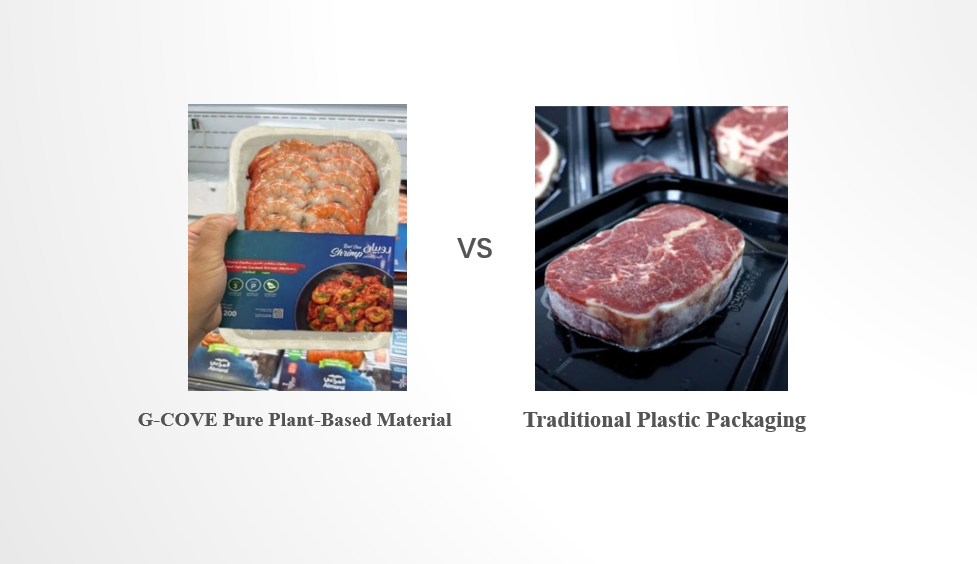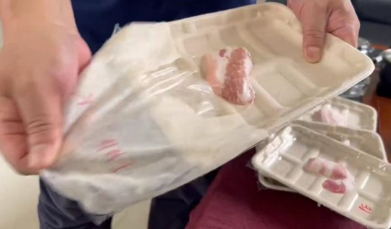Vacuum Skin Packaging (VSP) removes oxygen to extend food shelf life, making it an essential preservation method in the food industry. However, traditional plastic-based VSP has long been criticized for environmental pollution.
At G-COVE, we have developed an eco-friendly alternative—a high-strength molded pulp VSP solution made from bamboo fiber. By combining plant-based materials with vacuum technology, we extract air from the packaging, preventing the growth of mold and bacteria.
This innovative approach not only extends shelf life but also maintains food freshness and texture. Unlike traditional plastic packaging, G-COVE’s molded pulp VSP trays are 100% biodegradable, recyclable, and compostable, making them a game-changer in sustainable food packaging.

For specific food applications, G-COVE trays can be customized with barrier coatings such as EVOH, PE, PBAT, and PLA to ensure optimal air resistance and preserve meat freshness.

G-COVE has also introduced an innovative, easy-peel eco-film that simplifies waste separation and enhances natural biodegradation. User can easily remove the film from the fiber tray. Tray and film can be recycled separately for recycle and biodegradable purposes.

How Does VSP Work?
1️. Food is placed in G-COVE’s molded pulp tray, ensuring an eco-friendly base.
2️. A transparent vacuum-sealed film adheres tightly to the product’s contours without crushing it.
3️. Oxygen is removed, preventing bacterial growth, reducing food waste, and preserving taste.
www.g-cove.com
G-COVE TECHNOLOGY GROUP CO, LTD.
About Author
You may also like
-
Essential Guide to Cake Serving Tools: What Every Baker Should Know About Cutlery Sets
-
The Most Popular Cardboard Gift Boxes in 2025
-
Why Choose a Shockproof Pencil Case from Long Kong Packaging Produce?
-
Why Should You Choose Custom Printed Packaging Tape for Your Brand?
-
How to Choose the Right Alcoholic Beverage Packaging for Your Brand
